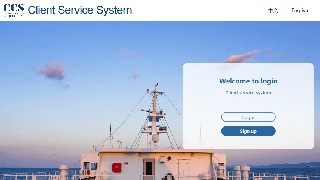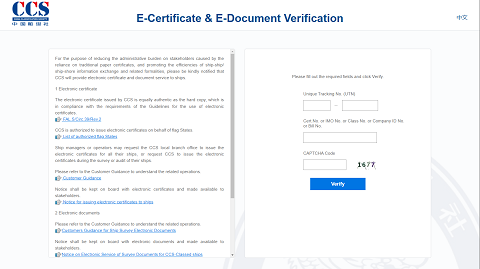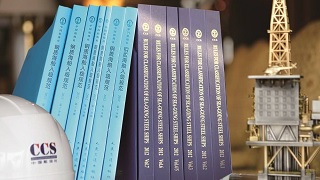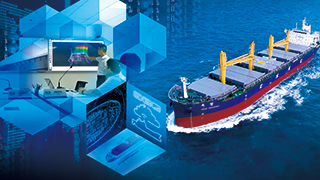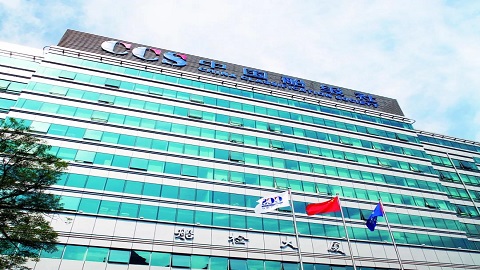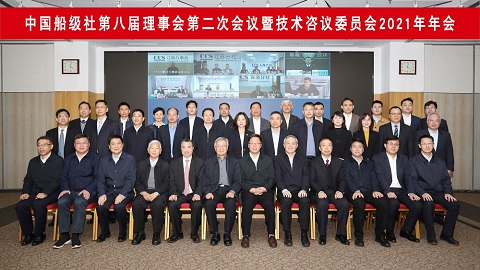Rules for Classification of Sea-going Steel
Ships (2023 Amendments) will take effect on 1 July 2023.
Main contents of revisions are as follows:
PART ONE
PROVISIONS OF CLASSIFICATION
Add that where hydraulic test is difficult to be
carried out on the shipway or within the dock, it may be carried out while the
ship is afloat; adding the List of Certification Requirements for Natural Gas
Specialized Products; adding the class notations R1(D)/R2(D)/R3(D) for ships
engaged on non-international voyages in restricted service, NEV Carriage (X)
for carriage of new energy vehicles, DGP-F for fire-fighting of dangerous goods
in packaged form and Bow Loading System* for bow loading system; revising the
class notation OMBO (One Man Bridge Operation) as BDE-1/BDE-2/BDE-3 (Bridge
design and equipment), moving the class notations related to green eco-ships
from Table I-3 to Table G; specifying that the intact
stability, subdivision and damage stability, fire safety of ships in restricted
service are to comply with the relevant requirements in PART TEN of the Rules.
For ships under construction, the approved plans will not be invalid automatically after 4 years since the approval date of plans. UR Z17(Rev.17 202207) is included and relevant reference documents
are updated. Revising the relevant requirements for inflatable rescue boat as
well as the certification condition in the Approval and Certification Process.
Deleting all contents related to green eco-ships. For relevant requirements,
refer to CCS Rules for Green Eco-Ships (2022).
PART
TWO HULL
Adding the transition scenario where taper is not necessary for the butting of plates of different
thicknesses and that single-sided
continuous fillet welding may be acceptable for dry spaces in superstructure
and deckhouse; adding the strength requirement target when additional
transverse strengthening in the form of transverse wash bulkheads or web frames
is provided; specifying the boundary conditions for hatch cover FE model;
specifying the compulsory scope for strengthened for heavy cargoes to be loading rate no greater than 0.833m3/t
and that strengthening loaded by steel coils are excluded; optimizing the structural
strength requirements for ships loaded with steel coils comprehensively,
specifying strengthening scope, corrosion addition and revising requirements
for inner bottom platings and stifeners as well as bilge hopper sloping plates;
specifying the design load and stress criteria for the calculation of hull
supporting structure for life-saving appliances; adding the definition for
launch barge and the class notation requirement; adding the empirical formulae
for the dynamic load of deck hinges and specifying the amplification factor;
adjusting the arrangement requirement for deck girders in double box trunk deck.
PART
THREE MACHINERY
INSTALLATIONS
Adding the selection requirements for test specimens with
fire endurance for plastic piping systems on ships, and specifying means to
carry out fire endurance tests; adding the measurement requirement for slope at
stern bearing in shaft alignment steps after the integrated stern tubes are
poured and installed; optimizing the definition of steering
gear control system and adding the definition of hydraulic locking; clarifying
the means of intervention for mechanical failures; adding the requirement for
driving loads for the design load of windlasses and technical requirements for
control brakes.
PART FOUR ELECTRICAL INSTALLATIONS
Clarifying the ship types for which analysis for coordination of protective devices is required to be
submitted; revising the provisions for alarm and automatic shutdown of ventilation fans and oil pumps
before the release of fire extinguishing media; revising limits of Temperature Rise of Air-Cooled Machines; adding the provisions
for explosion groups and temperature class for the carriage of some dangerous
goods.
PART
EIGHT ADDITIONAL REQUIREMENTS
Adding the
class notations for OMBO, i.e. BDE-1, BDE-2 and BDE-3, are revised and
technical requirements for class notations BDE-2 and BDE-3; clarifying
the unspecific parts in the existing rules in Chapter 15 Additional
Requirements for Electrically Propelled Ships; deleting the additional
requirements for passenger ships; specifying the requirements for
fire-extinguishing systems and means of cooling; supplementing the technical
requirements for the Bow Loading System*.
PART NINE COMMON STRUCTURAL RULES FOR BULK CARRIERS AND
OIL TANKERS
Revising
the scope of application as determination upon the freeboard length;
supplementing the requirements for the bow structure for local bow impact angle less than 50 deg; clarifying
the rule requirements applicable to brackets of the superstructure and
deckhouse; clarifying the value selection location for plate thickness due to
correction of shear force of oil tankers; clarifying that the slenderness
requirement is not applicable to bilge plates, corrugation and superstructures
as well as deckhouses; specifying the means of handling when the flange width
of the stiffener outstands; specifying the buckling
assessment method of the primary supporting member
in way of the opening; revising the calculation requirement for the ultimate
buckling capacity of the stiffener; clarifying the dimensional requirements for
members of superstructures and deckhouses; clarifying the relevant requirements
for the hatch cover FE model.
PART
TEN SHIPS IN RESTRICTED SERVICE
Adding the class notations R1(D), R2(D) and R3(D) for ships
engaged on non-international voyages in restricted service as well as
requirements for survey after construction; adding the requirements for
checking the longitudinal strength of ships assigned with different notations
for transiting and operation respectively; deleting the requirements for survey
of ‘tween deck of bulk carriers and chemical tankers.
Note: In the
amendments, blue underline is to
highlight new insertions, strikethrough line
is to highlight deleted contents.
Note: If you need to reprint, please indicate the source of the information.

